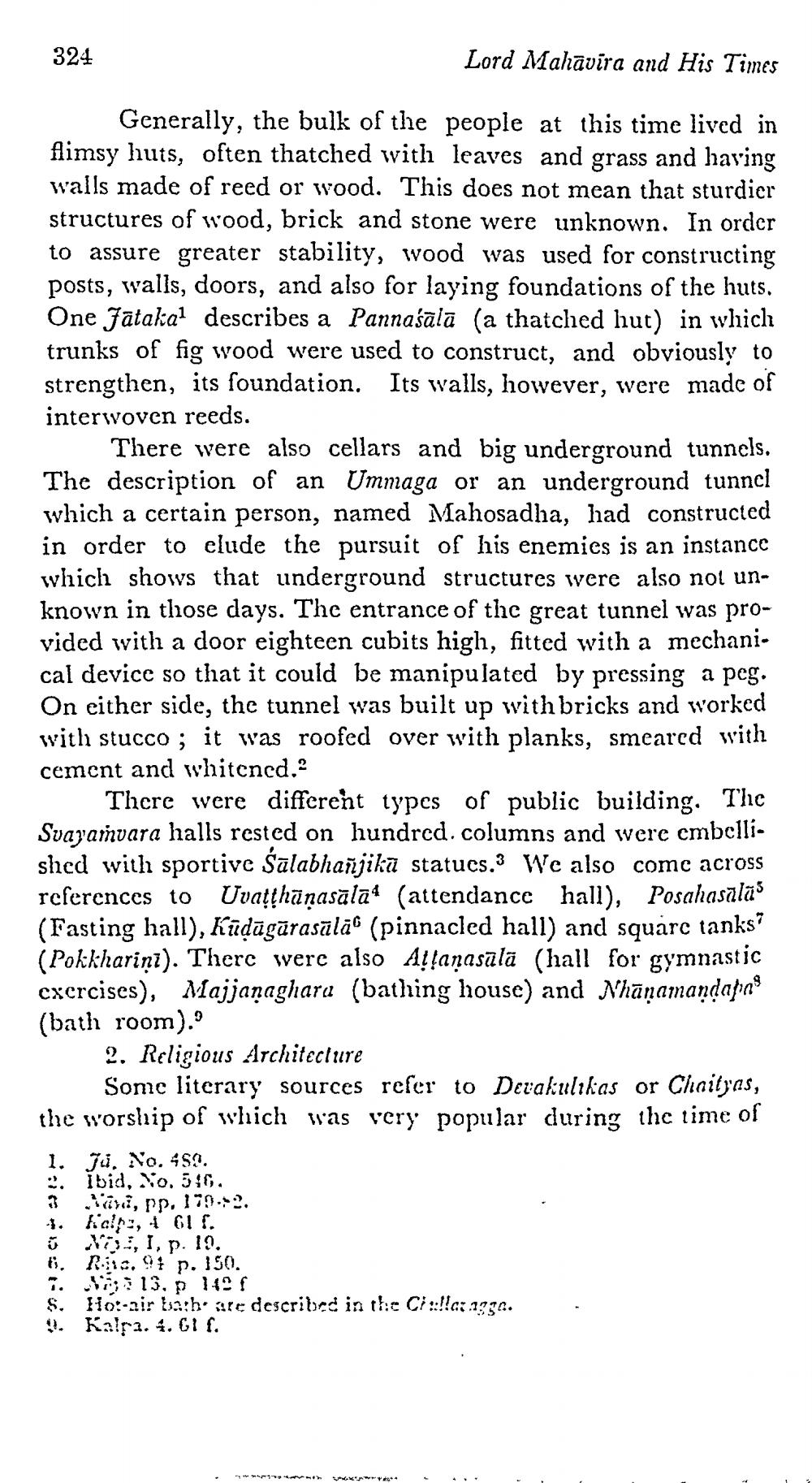________________
324
Lord Mahavira and His Times
Generally, the bulk of the people at this time lived in flimsy luts, often thatched with leaves and grass and having walls made of reed or wood. This does not mean that sturdier structures of wood, brick and stone were unknown. In order to assure greater stability, wood was used for constructing posts, walls, doors, and also for laying foundations of the huts. One Jatakal describes a Pannaśālā (a thatched hut) in which trunks of fig wood were used to construct, and obviously to strengthen, its foundation. Its walls, however, were made of interwoven reeds.
There were also cellars and big underground tunnels. The description of an Ummaga or an underground tunnel which a certain person, named Mahosadha, had constructed in order to elude the pursuit of his enemies is an instance which shows that underground structures were also nol unknown in those days. The entrance of the great tunnel was provided with a door eighteen cubits high, fitted with a mechanical device so that it could be manipulated by pressing a peg. On either side, the tunnel was built up with bricks and worked with stucco; it was roofed over with planks, smeared with cement and whitencd.2
There were different types of public building. The Svayamvara halls rested on hundred. columns and were embellished with sportive Śālabhañjikā statucs.3 We also come across references to Uvatthānasāla" (attendance hall), Posahasalas (Fasting hall), Kūdāgūrasālā (pinnacled hall) and squarc tanksi (Pokkhariņi). There were also Aļļaņasālā (hall for gymnastic exercises), Majjanaghara (bathing house) and Nhānamandapins (bath room).'
2. Religious Architecture
Some literary sources refer to Devalulikas or Chaityas, the worship of which was very popular during the time of 1. Jú. No. 45..
Ibid, Yo, 516. 3 tari, p. 179..
hich, 4618. Ū V , 1, p. 19. ti. Riis. 9 p. 150. 7. 1 13, 12 S. Ho:-air bash are described in the Ci::!!07.1936. . 9. Kalr2. . GI f.




